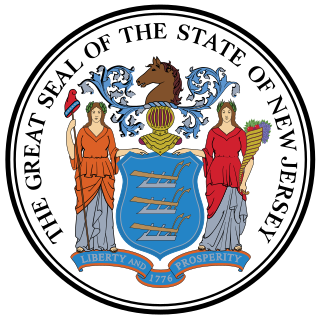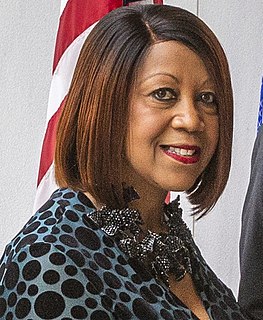Robert Barclay was a Scottish Quaker, one of the most eminent writers belonging to the Religious Society of Friends and a member of the Clan Barclay. He was also governor of the East Jersey colony in North America through most of the 1680s, although he himself never resided in the colony.

The Province of East Jersey, along with the Province of West Jersey, between 1674 and 1702 in accordance with the Quintipartite Deed were two distinct political divisions of the Province of New Jersey, which became the U.S. state of New Jersey. The two provinces were amalgamated in 1702. East Jersey's capital was located at Perth Amboy. Determination of an exact location for a border between West Jersey and East Jersey was often a matter of dispute.

The Middle Colonies were a subset of the Thirteen Colonies in British America, located between the New England Colonies and the Southern Colonies. Along with the Chesapeake Colonies, this area now roughly makes up the Mid-Atlantic states.

The New Jersey Legislature is the legislative branch of the government of the U.S. state of New Jersey. In its current form, as defined by the New Jersey Constitution of 1947, the Legislature consists of two houses: the General Assembly and the Senate. The Legislature meets in the New Jersey State House, in the state capital of Trenton. Democrats currently hold veto-proof supermajorities in both chambers of the legislature.

The Province of New Jersey was one of the Middle Colonies of Colonial America and became New Jersey, a state of the United States in 1783. The province had originally been settled by Europeans as part of New Netherland, but came under English rule after the surrender of Fort Amsterdam in 1664, becoming a proprietary colony. The English then renamed the province after the Bailiwick of Jersey in the English Channel. The Dutch Republic reasserted control for a brief period in 1673–1674. After that it consisted of two political divisions, East Jersey and West Jersey, until they were united as a royal colony in 1702. The original boundaries of the province were slightly larger than the current state, extending into a part of the present state of New York, until the border was finalized in 1773.
A lord proprietor is a person granted a royal charter for the establishment and government of an English colony in the 17th century. The plural of the term is "lords proprietors" or "lords proprietary".
Concession and Agreement was a 1664 document that provided religious freedom in the colony of New Jersey. It was issued as a proclamation for the structure of the government for the colony written in 1664 by the two proprietors, Lord John Berkeley and Sir George Carteret. The document promised religious freedom to all inhabitants of New Jersey, and also declared that the proprietors would be in charge of appointing the provincial governors. The first such governor to be appointed was Philip Carteret.

The Lieutenant Governor of New Jersey is an elected constitutional officer in the executive branch of the state government of New Jersey in the United States. The lieutenant governor is the second highest-ranking official in the state government and is elected concurrently on a ticket with the governor for a four-year term. Because the position itself does not carry any powers or duties other than to be next in the order of succession, the state constitution requires that the lieutenant governor be appointed to serve as the head of a cabinet-level department or administrative agency within the governor's administration.
Thomas Rudyard was a deputy governor of East Jersey and the first Attorney General of the English Province of New York, the predecessor position to the Attorney General of New York State and the successor position to an analogous office under the Dutch colonial government of New Netherlands.
Gawen Lawrie was a deputy governor of the American province of East Jersey from 1683 to 1686.
Originally, the state of New Jersey was a single British colony, the Province of New Jersey. After the English Civil War, Charles II assigned New Jersey as a proprietary colony to be held jointly by Sir George Carteret and John Berkeley, 1st Baron Berkeley of Stratton. Eventually, the collection of land fees, or quit-rents, from colonists proved inadequate for colonial profitability. Sir George Carteret sold his share of the colony to the Quakers in 1673. Following the sale, the land was divided into East and West Jersey. In 1681, West Jersey adopted a constitution. In 1683, East Jersey adopted one as well. In 1702, the colonies were united again under Anne, Queen of Great Britain, and adopted a constitution in 1776.
A tenth was used to divide the former American Province of West Jersey into smaller administrative divisions. Despite seemingly related names, tenths are not directly related to hundreds, other than both being administrative divisions.
The New Jersey Provincial Council was the upper house of the New Jersey Legislature under colonial rule until it was replaced by the New Jersey Legislative Council under the New Jersey Constitution of 1776.
Captain Andrew Bowne was an American colonial politician and jurist, who served in various capacities in both New York and New Jersey.
John Skene was the third deputy governor of West Jersey, part of the American Province of New Jersey, serving from October 1684 to April 1692.
The Lawrence Line was a boundary line or partition line drawn through the Province of New Jersey during the colonial period, dividing it into the Province of West Jersey and the Province of East Jersey. The line was created by surveyor John Lawrence in 1743, and sought to offer final resolution to the division between the two proprietary colonies set out on the Quintipartite Deed (1676) which divided New Jersey by a straight line from "the Northernmost Branch of said Bay or River of De la Ware which is in forty-one Degrees and forty minutes of latitude…unto the most southwardly poynt of the East syde of Little Egge Harbour." Several previous surveys, including the Keith Line (1686), the Coxe–Barclay Line (1688), the Thornton Line (1696) were disputed and drawn too far west. Lawrence was commissioned in 1743 to resolve the long-standing disputes.
William Pinhorne was an American colonial politician and jurist, who served in various capacities in both New York and New Jersey.
John Barclay was a Scottish Quaker, younger brother of Robert Barclay and a member of Clan Barclay. He held several government positions the East Jersey colony in North America and was a member of the New Jersey General Assembly from 1704 to 1706.
Holmes v. Walton was a case decided by the Supreme Court of New Jersey in 1780, thought to be the first decision in which an American court held a statute unconstitutional. It is considered a landmark in the American law of judicial review. In an apparently unreported opinion, Justice David Brearley held that a conviction entered by a six-person jury under a 1775 statute was void, because the Constitution of New Jersey required a jury of twelve.




